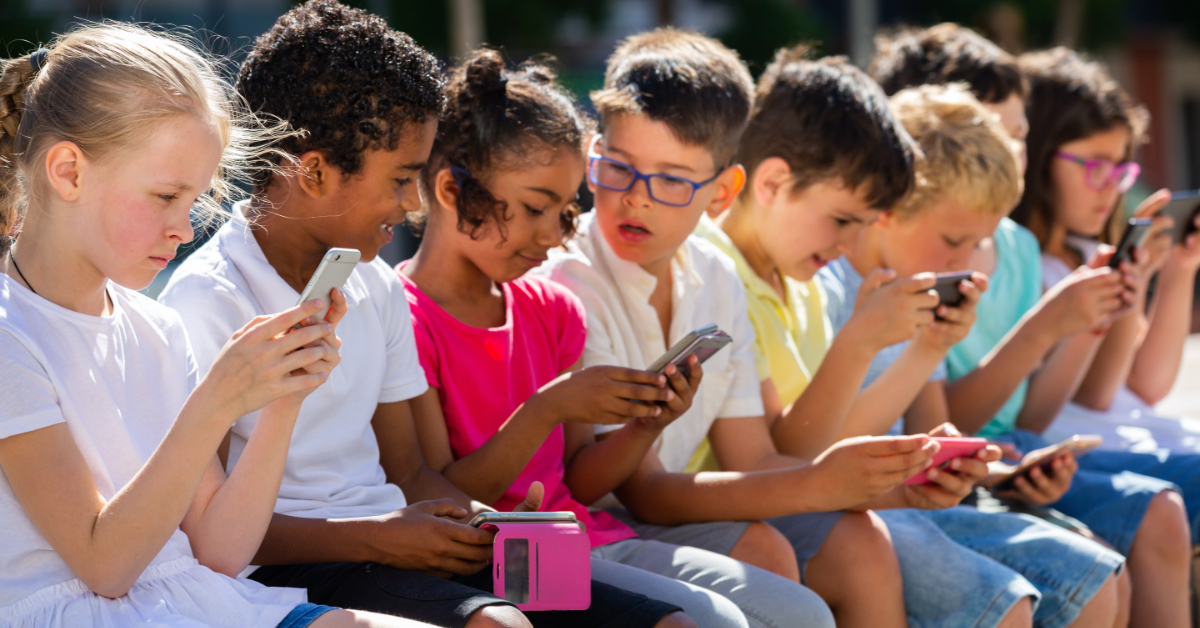
What is Digital Citizenship?
Digital Citizenship is a buzzword in education circles and refers to how we should use technology and social media in a way that contributes to the good of society, others, and ourselves.
Just as we teach children how to be good citizens of the United States by exploring topics like voting and community service and just as we teach students to be good global citizens by exploring topics like multiculturalism and diversity, we also need to teach our kids how to interact with social media and technology in a way that helps rather than harms.
Sections in this blog post:
• How to Model Digital Citizenship at Home
• How to Teach Digital Citizenship to Your Kids
• Examples of Good Digital Citizenship
• Examples of Bad Digital Citizenship
How to Model Digital Citizenship at Home
“Nicolas, please don’t check your phone at the table.”
Recently, I’ve been trying to teach Nicolas about being a good digital citizen.
There we were at the dining room table and I was again reminding Nicolas that he shouldn’t use a cellphone at the table. I stressed that eating dinner with the family is an important part of the day, providing opportunity for conversation and family bonding. Nicolas nodded and put his phone away. Problem solved, I thought to myself. I had seized this opportunity to speak into a situation and teach a basic principle of digital citizenship.
A few days later, during dinner, I happened to hear the buzz from my cellphone that notifies me of a new text. I’m sure you can guess where this is headed. Without thinking, I reached for my phone and began reading the text that I had received. I glanced up and, wouldn’t you know it, Nicolas was watching me. He didn’t have to say a word; I knew what he was thinking. I sheepishly put my phone away, feeling every bit like a hypocrite, and apologized to Nicolas.
There is an old saying, “do as I say, not as I do.” Our kids learn most by the example we set before them. If we want them to be good digital citizens, we ourselves must model what good digital citizenship looks like to our kids. Remember, they learn our values more by what we do than by what we say.
How to Teach Digital Citizenship to Your Kids
In January 2014, Lancaster Online featured an expose entitled Teens and Twitter that explored how Lancaster County high schoolers have been using public Twitter accounts to anonymously post “their often vulgar attraction to one another and describe sexual fantasies, using full names and graphic descriptions.”
The article was a wake-up call for parents, teachers, and public school officials. While there is much good that can be done with technology and social media, abuses like the one in the expose will continue to occur if parents are not diligent in teaching their children how to be good digital citizens.
Here are three tips to help teach digital citizenship to your children.
1) “Follow” Your Children
Use the tools and social media platforms that your children already use; Facebook, Twitter, Pinterest, texting, Skype, etc.
If you’re not sure how to go about setting up a Twitter or other social media account, ask your children to help you. If you ask, most kids/teens will gladly show you how to use the tools and sites that they use. To them, this says “Dad [or Mom] is interested in me and interested in things that interest me!”
2) Interact With Your Children Where They Are
Now that you have your Twitter account, follow your child on Twitter and encourage them to follow you. If your child is on Facebook, send them a friend request. Be sure to present this as a way to interact with your child rather than simply as a way to monitor or spy on them.
3) Involve Older Children
Have older children help teach their younger siblings how to use these tools.
Beyond the benefit of quality time, the above strategy also forces your older children to think about how they themselves use social media and how they want their younger siblings to use it. For example: “Hmm, I don’t think I’d want my little brother to do that…maybe I shouldn’t do that either.”
Always remember that you are the parent.
You have the authority to make all final decisions about how your children use social media and technology. Navigating the digital world is an opportunity to grow with your kids and be a part of their learning through your engagement with them.
Digital tools will come and go: for children, knowing that their parents are continually trying to engage with them will be valuable forever.
Examples of Good Digital Citizenship
Conner Haines is an unassuming 12 year old with a contagious smile and a passion for technology. He rarely goes anywhere without his trusty iPad and while many boys prefer rowdy sports, Conner is perfectly happy building apps. Despite his meek and modest personality that prefers to work quietly in the background, Conner was the focus of an article by Huffington Post. You see, Conner doesn’t just make his own apps. No, Conner builds apps for kids with cancer and then donates all the profits to the Make-A-Wish foundation.
This is such a great example of responsible and productive digital citizenship in action. Through technology and social media, Conner is able to impact the lives of children with cancer: children he may never have the opportunity of meeting in person. We live in a world run by computers and those computers operate on the codes that tell them what to do. By building apps, Conner is able to use technology to better the lives of others. Conner demonstrates good digital citizenship by using his technology skills to help others.
Speaking of coding, you should do the Hour of Code. The Hour of Code is an opportunity for every student to try computer science for one hour and learn basic coding principles in an easy and entertaining, visually appealing format. I did the Hour of Code and enjoyed seeing the results of my work. During the program, you get to watch engaging videos from people like Bill Gates (Microsoft), Mark Zuckerberg (Facebook) and Chris Bosh (NBA) as they introduce easy-to-understand computer programming concepts like ‘repeat loops’. The vision of Hour Of Code is to get students excited about the cool things they can do with a knowledge of programming. Who knows, maybe we’ll see more kids like Conner, using coding to ‘save the world.’
The vast majority of us are now digital citizens and that is true of children, teens, and adults. We have technology, we are connected on the web, and we use social media. By teaching your children how to be good digital citizens, you are helping to make this world a better place. You can start with sharing the inspiring story of Conner Haines with your children and doing the hour of code with them. Get involved with your kids and help them change the world, one person at time!
Examples of Bad Digital Citizenship
Rebecca Sedwick, a 12 year old girl, jumped to her death from a third-story cement plant structure in central Florida. She had been a victim of continual cyberbullying as well as verbal and even physical bullying throughout 2012 and 2013. Sadly, Rebecca is not the only girl whose life has been destroyed by cyberbullying; research indicates that 33% of US teenagers are victims of cyber-bullying while only 7% of US parents are worried about cyberbullying.
Here is some sobering research:
• Over 25 percent of adolescents and teens have been bullied repeatedly through their cell phones or the Internet. [Source]
• More girls are cyberbullies than boys (59% girls and 41% boys) [Source]
• 81% of youth agree that bullying online is easier to get away with than bullying in person. [Source]
• 80% think it is easier to hide online bullying from parents than in-person bullying. [Source]
• 1 in 4 teens are sending sexually explicit texts and/or nude photos (sexting) and approximately 48% of teens have received sext messages. [Source]
• 28% of 16-17 year olds have been unintentionally exposed to porn online. [Source]
• 71% of teens hide online behavior from their parents. [Source]
Social media and technology can be wonderful tools for learning, socializing, and having fun, but as the statistics and human stories show, it’s not all ‘fun and games’. In fact, our children are facing a clear and present danger and only a small percentage of parents understand the extent of that danger.
It’s a problem that 1 in 3 kids are being cyberbullied while only 7 out of every 100 parents are even worried about cyberbullying. It’s a problem when 25% of teens are sexting.
And parents, since 71% of children are hiding online behavior from their parents, one or more of your children may be hiding something from you. This means that talking about these issues with your children is absolutely crucial.
I encourage you to sit down with your children and talk about the problems they see online. Create a safe and open environment for your children to share freely with you their own struggles or what they have witnessed. Share your own struggles and concerns as well. Be proactive in asking your children how they are doing. Be proactive in protecting your children as best as you can from the dangers the online world presents.
The dangers are real and your middle school and high school students are often ill-prepared and unequipped to face these challenges alone.
Be their advocate. Be their protector. Be their friend. Let them know that we are in this together.




Thank you, great article! I may use some of it in my Computer Skills class this year.